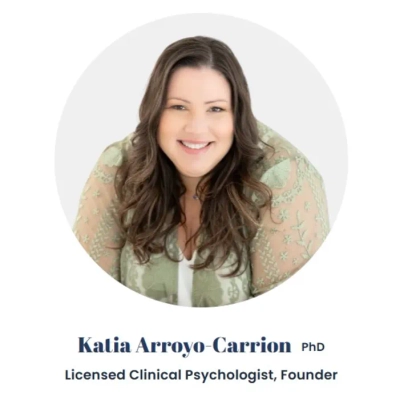7 Surprisingly Effective Therapeutic Approaches for Anxiety Disorders
Anxiety disorders affect millions worldwide, but new therapeutic approaches are offering hope. This article explores surprisingly effective treatments, backed by insights from leading experts in the field. From vagus nerve techniques to trauma-informed care, these innovative strategies are revolutionizing anxiety management.
- Vagus Nerve Techniques Calm Anxiety
- Functional Psychiatry Enhances Anxiety Treatment
- Trauma-Informed Care Empowers Anxiety Patients
- Interoceptive Awareness Reduces Anxiety Symptoms
- Brainspotting Rewires Anxiety-Related Neural Pathways
- Reshaping Birth Stories Alleviates Anxiety
- ACT Builds Psychological Flexibility for Anxiety
Vagus Nerve Techniques Calm Anxiety
One approach I have found surprisingly effective for anxiety is incorporating vagus nerve-based regulation techniques. My learning about the vagus nerve has changed the way I think about anxiety because it highlighted how much the nervous system itself contributes to the maintenance and escalation of symptoms. For many years, my work focused mainly on the cognitive and behavioral strategies that most psychologists are trained in. These remain valuable, but understanding the vagus nerve has opened up another pathway that works directly with physiology.
In practice, I now regularly introduce clients to tools that activate or soothe the vagus nerve. Tapping has been one of the most effective. I often guide clients to gently tap around the eyes, the lip, the chin, just above the collarbone, and under the ribs. Clients often describe the rhythm of tapping as grounding, and the physical action seems to help their body shift out of states of hyperarousal. I have found it especially helpful with clients who say they feel disconnected from their body or who report that talking alone does not help calm their anxiety. Alongside tapping, I sometimes use humming, gargling, or orienting to the environment. These may sound unusual at first, but they target the same system of regulation and provide a very direct way of helping the body find calm.
What has been particularly valuable is that these strategies offer an alternative set of skills alongside breathing exercises. Breathing is often the first technique people think of, and it is useful for many, but not everyone benefits from it. Some clients become more anxious when they are asked to focus on their breath. Others feel they are failing if breathing does not immediately make them calm. Having a set of vagus-based techniques means I can offer something that bypasses these barriers. Instead of telling a client to keep trying breathing exercises that are not helping, I can show them tapping or humming or simple orienting practices, and they often notice relief more quickly.
This shift has broadened my toolbox in a meaningful way. I no longer see nervous system regulation as one-size-fits-all. Rather, I see it as a menu of options that can be chosen and combined depending on what resonates with the individual client.

Functional Psychiatry Enhances Anxiety Treatment
In my experience, some of the best results with anxiety have come when I began using integrative functional psychiatry as part of treatment. The surprise was not that therapy or medication mattered less, but that progress accelerated once we also paid attention to underlying factors like disrupted sleep, nutritional gaps, inflammation, or hormonal imbalances.
I worked with a patient who had cycled through multiple medications and traditional therapy without meaningful relief. Through a functional assessment, we discovered cortisol irregularities and low vitamin D levels that were worsening the anxiety. By combining targeted supplementation, adjustments in daily routines, and therapy that focused on both coping skills and stress reduction, the patient reported fewer panic episodes, better sleep, and a greater ability to stay engaged in sessions. I think that the shift came from treating the body and mind together rather than relying on one avenue alone.
This experience has reshaped how I practice. I now view anxiety not only as a psychological challenge but also as a signal that the whole system needs attention. In my opinion, this model empowers patients because they begin to see concrete steps like nutrition, movement, and rest as part of their healing. Watching patients gain both stability and confidence through this broader approach has reinforced the value of moving beyond a single lens and embracing a whole-person perspective in psychiatric care.

Trauma-Informed Care Empowers Anxiety Patients
In my experience, one therapeutic approach that has been surprisingly effective for anxiety disorders is integrating trauma-informed care with individualized strategies that support both the mind and the body. This means creating a safe space where clients can explore their experiences while also receiving practical tools that are tailored to their specific needs. I believe that what makes this effective is not just the techniques used but the collaborative process that allows the client to feel in control of their healing.
I worked with a client who had lived with anxiety for years and felt discouraged by standard approaches that focused only on symptom management. We slowed down and personalized the process, combining talk therapy with practical self-regulation practices and education about how trauma and stress affect the nervous system. In my opinion, the combination of knowledge, emotional processing, and concrete strategies gave her a new sense of clarity. She began to see that anxiety was not a personal flaw but a natural response she could learn to manage differently.
Over time, her symptoms decreased, her sleep improved, and she developed greater confidence in handling daily stress. The most surprising aspect was how quickly her sense of empowerment grew once she had both understanding and tools to support herself. This approach has changed my practice by reinforcing that anxiety treatment is most effective when it is integrative, trauma-informed, and adapted to each individual. I believe that meeting clients in this way helps them build resilience and lasting coping skills rather than relying solely on short-term relief.

Interoceptive Awareness Reduces Anxiety Symptoms
One approach I've found effective in treating anxiety is to help people reconnect and build a relationship with their body's internal signals. It's called interoceptive awareness, and it basically means tuning into what's happening inside your body. These are things like breath, muscle tension, heartbeat, and emotional sensations. Many people with anxiety are living in their minds - looping in their racing thoughts and worried stories. When they begin to drop into the signals and sensations in their body, it helps them to feel more present and connected. There is a two-way street between body and mind, and we find that regulating one often helps regulate the other.
Years of practicing this way have shown me the power of the mind-body connection and sensory-informed mental health care. I regularly guide clients to pause, breathe, check in with their body, visualize, and soothe with their senses. Tending to and soothing the body often helps calm and quiet the mind in ways that reasoning and talking strategies cannot reach.

Brainspotting Rewires Anxiety-Related Neural Pathways
Although I primarily treat anxiety disorders using evidence-based practices like CBT and ERP, I've found Brainspotting to be highly effective for some clients with anxiety. This is especially true when the anxiety stems from negative beliefs about the self, such as "People won't like me" or "I don't belong". Incorporating Brainspotting into my practice has allowed these clients to heal in a way that often can't happen with CBT or a relational approach alone. Sometimes those negative core beliefs are really persistent, and no matter how much cognitive work we do, they're still holding onto that idea that in some way they're not good enough. Brainspotting lets us examine the memories behind those beliefs and rewire the neural pathways that got them from point A (the original event) to point B (the belief they developed in response to the event).

Reshaping Birth Stories Alleviates Anxiety
In my experience as a birth trauma coach, one approach that has been surprisingly effective for anxiety disorders is guiding clients to revisit and reshape the story of their birth experience in a safe and supportive way. This narrative work often becomes the key that unlocks long-held patterns of fear and worry. Many clients carry anxiety because their birth or reproductive stories have never been fully told, and the emotions connected to those events remain unresolved.
I once worked with a client who had lived with anxiety for years despite trying several traditional treatments. She had gone through a traumatic birth but avoided speaking about it because it felt too overwhelming. When she finally began sharing the story in small pieces, she was able to give language to feelings she had kept buried. As she worked through the details, she discovered that the anxiety she felt in daily life was connected to unprocessed emotions from that experience.
The change was powerful. Her anxiety lessened, and she described feeling lighter and more present in her relationships. For me, this reinforced how important it is to create space for clients to voice their birth story and explore what it means to them. Narrative work not only reduces symptoms but also restores a sense of agency. I believe that helping clients reclaim their story allows them to view themselves with more compassion, which in turn supports lasting healing and resilience.

ACT Builds Psychological Flexibility for Anxiety
One surprisingly effective approach for anxiety disorders is Acceptance and Commitment Therapy (ACT). At first, I was skeptical; ACT seems less structured than CBT. However, many clients, especially those who feel exhausted by trying to control or eliminate their anxious thoughts, find that ACT provides real relief. Rather than pushing back against anxiety, clients learn to recognize it, accept the feeling, and then adjust their focus on living in alignment with their values. In practice, this has shifted a lot of focus away from symptom elimination and towards building psychological flexibility to acknowledge and accept.
It's important to use metaphors, mindfulness exercises, and value-based goal setting during this process with clients to help reduce anxiety and significantly increase satisfaction in their lives. Overall, therapy isn't only about reducing distress; it's also about helping people live meaningfully with purpose, even with anxiety, depression, or other feelings present.


